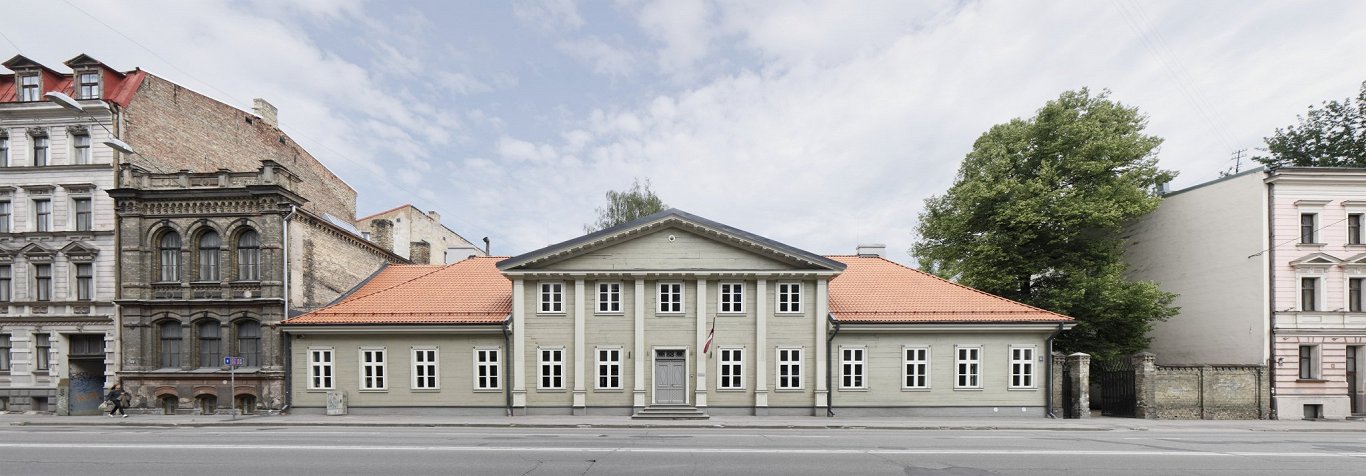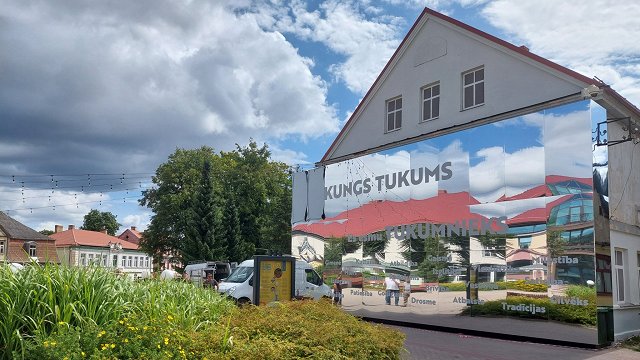Architectural Culture Stories
From September 24 to 27, the European Heritage Days will take place in Latvia, the subject of which is architectural culture this year. The National Heritage Board has compiled more than 30 examples with valuable history, construction, restoration. On LSM, we present the stories of these sites, as told by Latvian architectural and cultural heritage experts.
The story of Riga School of Design and Art is told below by the woman behind its restoration project, architect Zaiga Gaile.
A school for Russian boys was built in 1819 in Riga to implement the education program approved by Catherine the Great, Empress of Russia. Following a long search, the original architectural plan of the monumental log building was found in the Archives of Tartu, which at that time was the center of the Baltic Province. In the beginning, the school was attended by 100 students, but later the number dropped to 40.
Over two centuries, the building has always housed a school. The last hundred years and today, it is the Secondary School of Applied Arts, where the students are taught to work with timber, metal, glass, clay and other materials. The school has a rich history and traditions, and several generations of Latvian artists have studied there.
The history of restoration of this wooden building began in 2000 when Catharina Collet, Vice President of international heritage protection organisation Europa Nostra, visited Riga. At that time, about ten years after the restoration of independence, the wooden heritage of Riga was particularly endangered, because rapid development of construction works started. Soon after, Foundation Latvia Nostra was established, which in 2001 in Riga organised Europa Nostra international conference that adopted the Declaration on the Preservation of Wooden Heritage.
It is in this turbulent era, when the romantic story of Cinderella and the Prince began. The opening of the Europa Nostra conference in September 2001 took place in the backyard of the old school. The shabby Cinderella welcomed His Royal Highness, Henrik, Prince Consort of Denmark. The president of Europa Nostra toured the school premises, climbed up to the attic, signed a truss with red ink and presented a donation to the director of the school. The amount was sufficient to draft the construction project for the building. It took 13 years until the school attracted adequate funding from the European Regional Development Fund, and in 2014 the renovated school building opened its doors once again.
The book Koka māja (Wooden House) published by Latvia Nostra sums up the memories of former students remembering the time they spent studying at the old wooden school. In the process of renovation it was important to preserve and highlight the sentimental value. Centuries old beams were preserved on the interior walls. All premises kept their stove heating. Old doors were restored, and for quite a long time it was the intention to restore the old window frames. Unfortunately, after the removal of countless layers of old paint, they fell to pieces. From the façades of the building, layers of board cladding were removed, gaps were caulked with tow, logs painted with linseed oil paint.
A modern touch was added to the attic and main stairway - aluminium skylights facing the backyard gave the school bright attic studios.
The school has been open for already six years after the renovation. Every time I [Zaiga Gaile] accompany a group of architects visiting the school, I ask the school’s janitor about the daily life at school. Everything is perfect! Students are happy there and feel proud of their school. In the mornings, until the 11 stoves heat up, it is rather chilly, but students are still wearing short sleeves, and in the evenings it is almost impossible to make them leave.
In 2014, the project was awarded the Latvian Architecture Award Grand Prix.
Publication developed in cooperation with the National Heritage Board.
Find out also the story of Kalnciema Street.



























